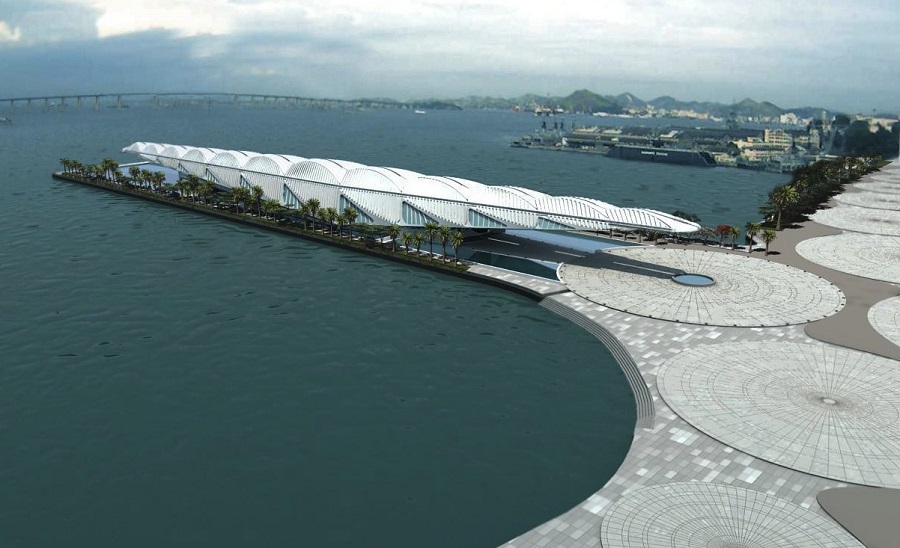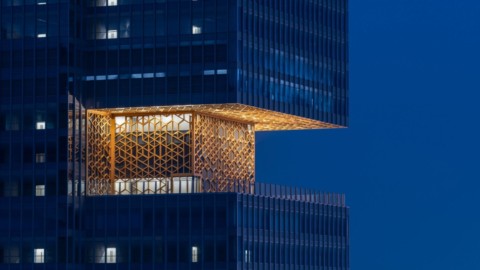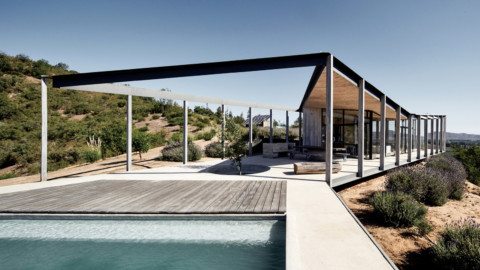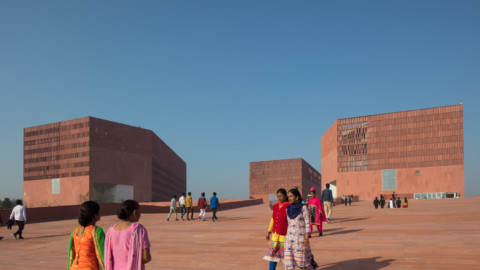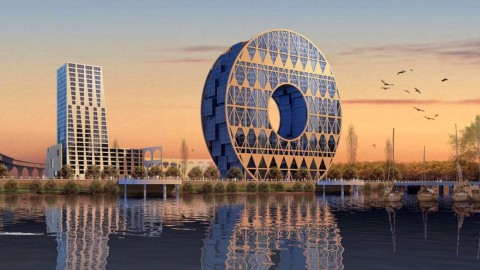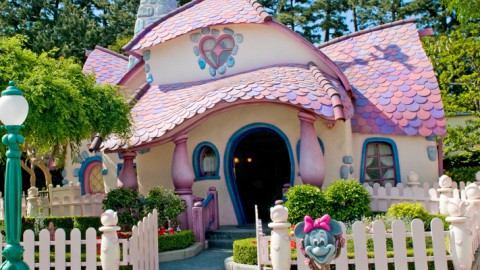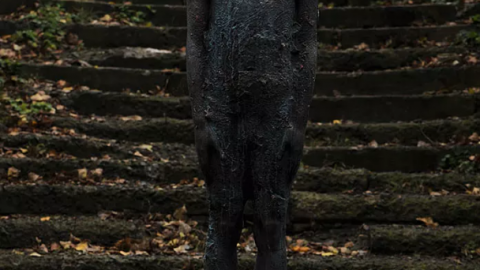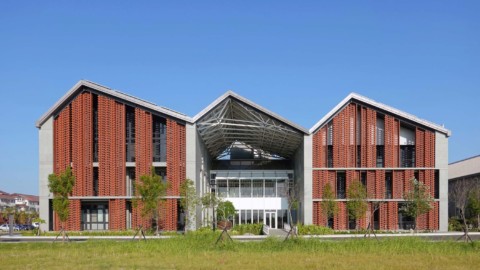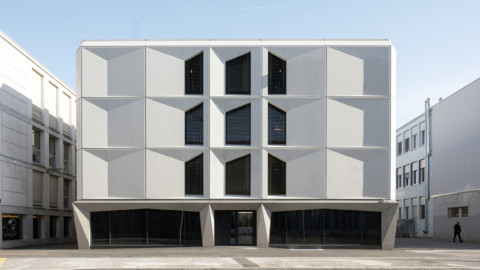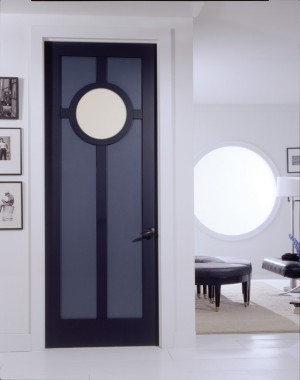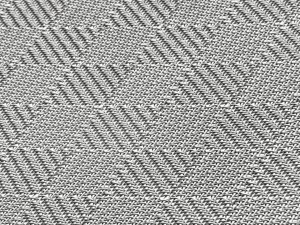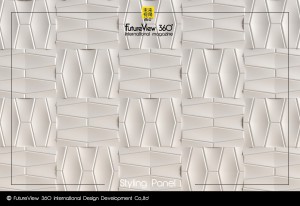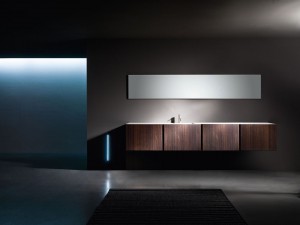Museum of Tomorrow

The Museum of Tomorrow (Portuguese: Museu do Amanhã) is a science museum in the city of Rio de Janeiro, Brazil. It was designed by Spanish neofuturistic architect Santiago Calatrava, and built next to the waterfront at Pier Maua. Its construction was supported by the Roberto Marinho Foundation and cost approximately 230 million reais. The building was opened on December 17, 2015, with President Dilma Rousseff in attendance.
The main exhibition takes visitors through five main areas: Cosmos, Earth, Anthropocene, Tomorrow, and Us via a number of experiments and experiences. This intricate yet captivating museum mixes science with an innovative design to focus on sustainable cities and an ecological world.
The museum was part of the city’s port area renewal for the 2016 Summer Olympics.
明日博物館(葡萄牙語:MuseudoAmanhã)是巴西里約熱內盧市的科學博物館。 它由西班牙新古典主義建築師聖地亞哥·卡拉特拉瓦(Santiago Calatrava)設計,毗鄰Pier Maua的海濱。 它的建造得到了Roberto Marinho基金會的支持,耗資約2.3億雷亞爾。 該建築於2015年12月17日開放,總統Dilma Rousseff出席。
主要展覽通過一系列實驗和經驗,帶領參觀者通過五個主要領域:宇宙,地球,人類世,明天和我們。 這個錯綜複雜但迷人的博物館將科學與創新設計相結合,專注於可持續城市和生態世界。
該博物館是2016年夏季奧運會城市港口區域更新的一部分。
Established:17 December 2015 Edit this on Wikidata
Location:Brazil Edit this at Wikidata
Coordinates:22°53′38″S 43°10′45″WCoordinates: 22°53′38″S 43°10′45″W
Area:15,000 m2 (160,000 sq ft)
Architect:Santiago Calatrava
成立時間:2015年12月17日在維基數據上編輯此內容
地點:巴西在維基數據上編輯此內容
坐標:22°53’38“S 43°10’45”WCoordinates:22°53’38“S 43°10’45”W
面積:15,000平方米(160,000平方英尺)
建築師:聖地亞哥卡拉特拉瓦
The Museu do Amanhã (The Museum of Tomorrow), an innovative cultural space addressing the future of the planet designed by architect, engineer and artist Santiago Calatrava, opened its doors last Saturday in the burgeoning Puerto Maravilha neighborhood in Rio de Janeiro, Brazil. More than 25,000 visitors welcomed the new Museum on its first weekend.
MuseudoAmanhã(明日博物館)是一個創新的文化空間,致力於建築師,工程師和藝術家聖地亞哥·卡拉特拉瓦設計的地球未來,於上週六在巴西里約熱內盧蓬勃發展的Puerto Maravilha社區開放。超過25,000名遊客在第一個週末歡迎新博物館。
“The city of Rio de Janeiro is setting an example to the world of how to recover quality urban spaces through drastic intervention and the creation of cultural facilities such as the Museum of Tomorrow and the new Museum of Art,” said Santiago Calatrava. This vision led us, in our first designs, to propose the addition of a plaza outside the Museum. The plaza creates a more cohesive urban space and reflects the neighborhood’s greater transformation.”
聖地亞哥·卡拉特拉瓦說:“里約熱內盧市正在為如何通過大力干預和創建文化設施(如明日博物館和新藝術博物館)創造優質城市空間的世界樹立榜樣。”在我們的第一個設計中,我們引導我們在博物館外增加一個廣場。廣場創造了一個更具凝聚力的城市空間,反映了社區的更大變革。

The design of the Museum is inspired by the Carioca culture and through its architecture, explores the relationship between the city and the natural environment. The Museum includes 5,000 square meters of temporary and permanent exhibition space, as well as a 7,600 square meter plaza that wraps around the structure and extends along the dock. The building features large overhangs 75 meters in length on the side facing the square and 45 meters in length on the side facing the sea. These features highlight the extension of the Museum from the dock into the bay. The permanent exhibition is housed upstairs, and features a roof 10 meters high with panoramic views of Guanabara Bay. The total height of the building is limited to 18 meters, which protects the view from the bay of Sao Bento Monastery, a UNESCO World Heritage Site.
博物館的設計靈感來自卡里奧卡文化,通過其建築,探索城市與自然環境之間的關係。博物館包括5,000平方米的臨時和永久展覽空間,以及圍繞建築物並沿著碼頭延伸的7,600平方米的廣場。該建築在朝向廣場的一側有75米長的大懸臂,在面向大海的一側有45米長。這些功能突出了博物館從碼頭到海灣的延伸。永久性展覽位於樓上,設有10米高的屋頂,享有瓜納巴拉灣的全景。該建築的總高度限制在18米,保護了從被聯合國教科文組織列為世界遺產的Sao Bento修道院海灣的景色。
The cantilevering roof with its large mobile wings and the facade structure expand almost the full length of the pier emphasizing the extension into the Guanabara Bay, while minimizing the building’s width. A reflection pool surrounding the building on the outside—used to filter water that is being pumped from the bay and released back in from the end of the pier— gives visitors the impression that the Museum is floating.
懸臂式屋頂及其大型活動翼和立面結構幾乎擴展了碼頭的整個長度,突出了瓜納巴拉灣的延伸,同時最大限度地減少了建築物的寬度。外圍建築物周圍的反射池 – 用於過濾從海灣抽出的水並從碼頭末端釋放回來 – 給遊客留下博物館漂浮的印象。
“The idea is that the building feels ethereal, almost floating on the sea, like a ship, a bird or a plant. Because of the changing nature of the exhibits, we have introduced an archetypal structure inside the building. This simplicity allows for the functional versatility of the Museum, able to accommodate conferences or act as a research space,” said Mr. Calatrava.
“我們的想法是,建築感覺空靈,幾乎漂浮在海面上,就像船,鳥或植物。由於展品的性質不斷變化,我們在建築物內部引入了一個原型結構。這種簡單性允許博物館具有多功能性,能夠容納會議或充當研究空間,“卡拉特拉瓦先生說。

The building is orientated in the north-south direction, off-center from the pier’s longitudinal east-west axis, maximizing a continuous landscaping feature containing beautiful gardens, paths and leisure areas along the southern length of the pier. A park walkway around the perimeter of the pier will allow visitors to circumnavigate the Museum, while enjoying panoramic views of the Sao Bento Monastery and the Guanabara Bay. The lower level contains functional and technical rooms, such as the Museum’s administrative offices, educational facilities, research space, an auditorium, a museum store, a restaurant, lobby, archives, storage and a delivery area.
該建築位於南北方向,偏離碼頭的縱向東西軸線,最大化連續景觀,包括沿碼頭南部的美麗花園,小徑和休閒區。圍繞碼頭周邊的公園走道將允許遊客環繞博物館,同時欣賞Sao Bento修道院和瓜納巴拉灣的全景。下層包括功能和技術室,如博物館的行政辦公室,教育設施,研究空間,禮堂,博物館商店,餐廳,大廳,檔案館,倉庫和交付區。
Located on the Maua Pier, the Museum of Tomorrow is part of a larger revitalization of Porto Maravilha, the port neighborhood in Rio de Janeiro. The project allows for better integration between the Port District and the city center and is helping to make this area one of the most attractive neighborhoods in the city. The building “is the result of a consistent dialogue. The building was built to be a museum for the future, and an educational unit,” said Mr. Calatrava.
明日博物館位於Maua碼頭,是里約熱內盧港口附近Porto Maravilha的一次大規模復興活動的一部分。該項目允許港區和市中心之間更好的整合,並有助於使該地區成為該市最具吸引力的社區之一。該建築“是一致對話的結果。該建築是為了未來的博物館,也是一個教育單位,”卡拉特拉瓦先生說。

The building features sustainable design, incorporating natural energy and light sources. Water from the bay is used to regulate the temperature inside the building; this source also supplies water for the Museum’s surrounding reflecting pools. The Museum also uses photovoltaic solar panels, which can be adjusted to optimize the angle of the sun’s rays throughout the day and generate solar energy to supply the building.
該建築採用可持續設計,融合了自然能源和光源。來自海灣的水用於調節建築物內的溫度;該水源還為博物館周圍的反射池供水。博物館還使用光伏太陽能電池板,可以調整以全天優化太陽光線的角度,並為建築物提供太陽能。
The visionary museum is focused on answering five key questions: Where did we come from? Who are we? Where are we? Where are we going? And how do we want to live together over the next fifty years?
這個有遠見的博物館專注於回答五個關鍵問題:我們來自哪裡?我們是誰?我們在哪?我們去哪?我們如何在未來五十年內共同生活?
The Museum’s exhibits will address issues including population growth and increased life expectancy, consumption patterns, climate change, genetic engineering and bioethics, the distribution of wealth, technological advances and changes in biodiversity. The permanent exhibition is curated by physicist and cosmologist Luiz Alberto Oliveira and designed by Ralph Appelbaum, with the artistic direction of Andres Clerici.
博物館的展品將解決人口增長和預期壽命延長,消費模式,氣候變化,基因工程和生物倫理學,財富分配,技術進步和生物多樣性變化等問題。常設展覽由物理學家和宇宙學家Luiz Alberto Oliveira策劃,由Ralph Appelbaum設計,由Andres Clerici的藝術指導。

In addition to the main exhibition area, the Museum has space for temporary exhibitions, a 400-seat auditorium, a cafe, a restaurant and a gift shop. The Museum will also host the Exploration Lab of Tomorrow, a space for educational activities and sample projects and prototypes. The Observatory of Tomorrow will provide a space for technological and scientific research, which may be integrated into the Museum exhibitions.
除了主展區外,博物館還有臨時展覽空間,400個座位的禮堂,咖啡廳,餐廳和禮品店。該博物館還將舉辦明日探索實驗室,這是一個教育活動空間,樣本項目和原型。明天的天文台將提供技術和科學研究的空間,可以融入博物館展覽。
The Museum of Tomorrow is made possible by the City of Rio de Janeiro and the Roberto Marinho Foundation, with the sponsorship of Banco Santander Brasil and the BG project. The project is supported by the Government of Brazil, through the Ministry of Environment and the Financier of Studies and Projects (FINEP).
里約熱內盧市和Roberto Marinho基金會在Banco Santander Brasil和BG項目的讚助下成為明日博物館。該項目得到了巴西政府的支持,通過環境部和研究和項目融資機構(FINEP)。


FROM:https://www.architectmagazine.com/project-gallery/the-museum-of-tomorrow_o
https://en.wikipedia.org/wiki/Museum_of_Tomorrow
FROM:Museum of Tomorrow
FROM:Rio 2016™ Museum of Tomorrow / Museu do Amanhã Rio de Janeiro [HD]
Don’t you think it’s addictive?
Want to know more about the beauty of architecture?
Come and join our members to explore the beauty of architectural design.
覺得看得不過癮嗎?
想要知道更多建築之美嗎?
快來加入我們的會員,一同探索建築設計之美。
The above article is purely for appreciation and sharing purposes, as well as the construction of new technology and the public can be in-depth understanding of the information at the same time there are sources, will be able to query, no use of the document as a commercial transaction, if illegal, please inform the We will immediately remove the site, thank you for cooperation.
以上文章純粹作為欣賞及分享用途,以及將建築新型技術傳遞給與大眾能夠深入了解,同時資料還有來源,將可查詢,絕無使用該文件資料作為商業交易行為,如有違法請務必告知該網站我們將立即處理撤除,謝謝合作。

